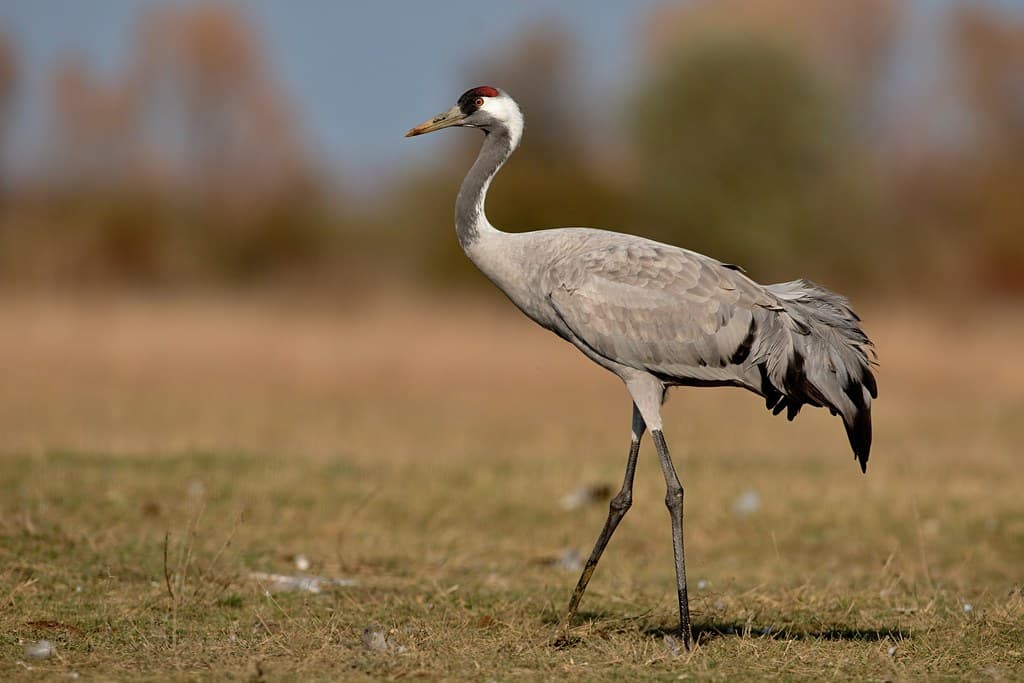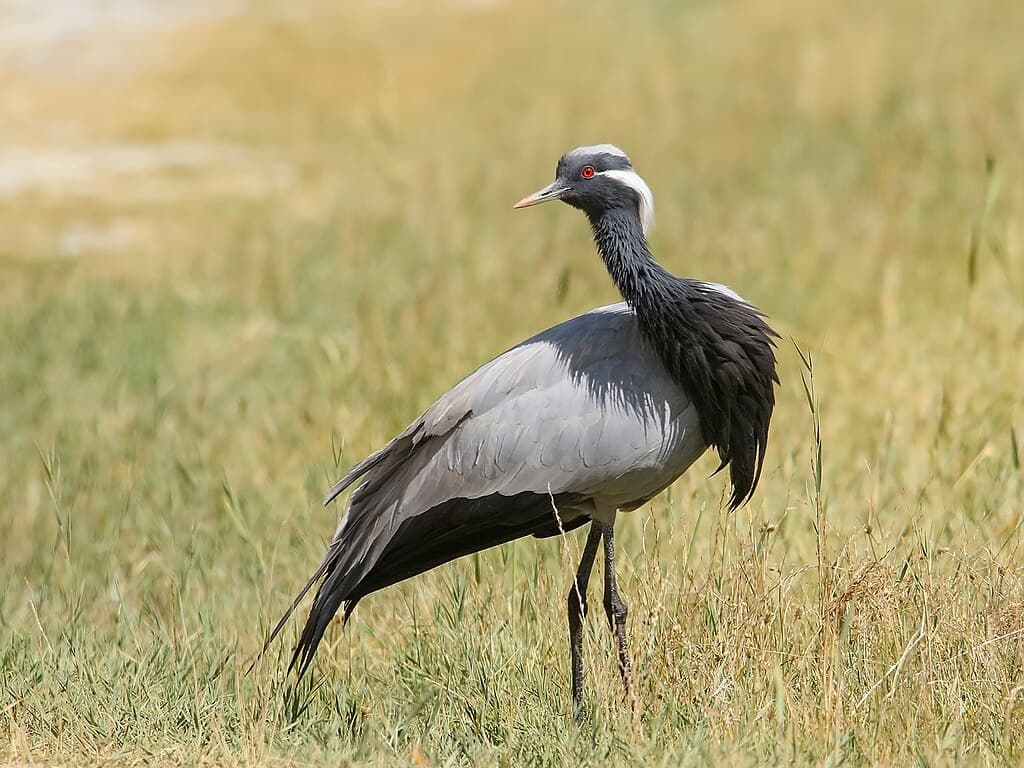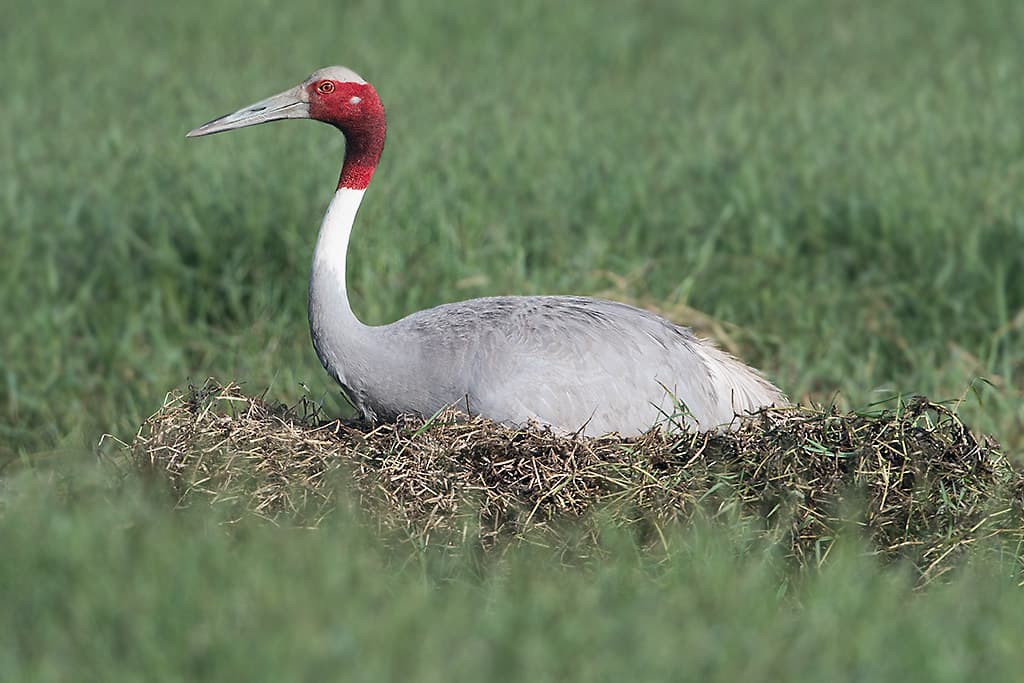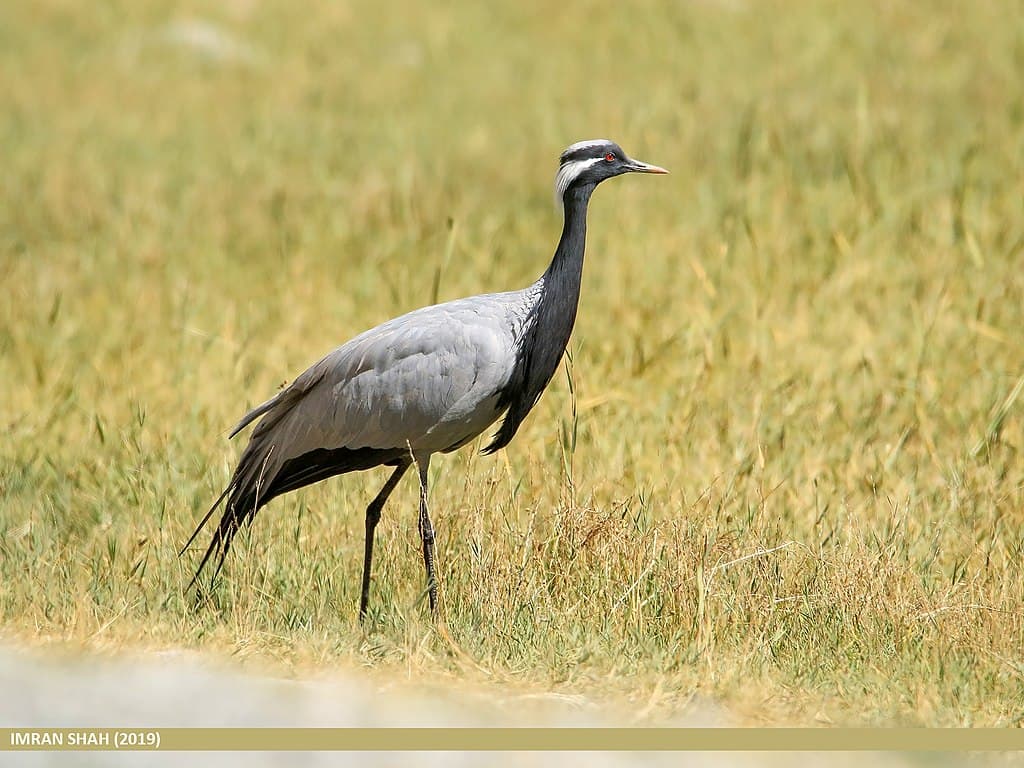Cranes are one majestic birds with a very graceful appearance, and we have very limited knowledge about them. A majority do not even know how many crane species we have in Cambodia, and there are just 3. We are going to learn a little about each 3 crane species in Cambodia today. Let’s see which one that you like the most.
Common Crane (ក្រៀលកញ្ចឹងកក្រហម)

The common crane aka Eurasian crane is one of the common crane species in Cambodia. A common crane is a large bird that stands up to 100 to 130 centimeters tall. It has an overall slate-gray body with a blackish forehead and lores, a bare red crown, and a white streak behind its eyes. Common cranes are social birds that fly in flocks of up to 400 birds during migration.
As for their habitats, they live in a wide range of areas depending on the season. In winter, they live in flooded areas, shallow sheltered bays, and swampy meadows. The interesting thing about them is that adult common cranes undergo a complete molt every two years before migration. During that period, they will remain flightless for 6 weeks until their new feathers grow. At this time, they live in areas with shallow waters or high reed cover for concealment. After the migration period, they will winter in open country like on cultivated lands and savanna-like areas.
All cranes are omnivorous but they largely feed on plant matter such as fruits, leaves, rhizomes, roots, seeds, stems, and tubers. At the same time, they also eat acorns, cedar nuts, health berries, olives, peas, pond weeds, and potatoes when available. As for the animal diet, it includes amphibians, crabs, earthworms, insects, millipedes, rodents, small birds, spiders, snails, and woodlice.
Demoiselle Crane (ក្រៀលតូច/ក្រៀលទ្រូងខ្មៅ)

Being the smallest crane species in the family, Demoiselle cranes are only around 76 centimeters tall. At a glance, a Demoiselle crane looks very similar to the common crane. It has a long white neck stripe and black feather on the fore neck that extends down over its chest. While not so colorful, Demoiselle cranes still look very noble due to their delicate build and deep orange-red eyes. The bird has long legs, a long neck, and a long compressed bill that helps with feeding. Speaking of feeding, these cranes feed mainly on seeds and other plants as well as insects.
Demoiselle cranes have an extremely large range, across Central Asia all the way to South Asia and Southeast Asia. They are also very social, flying in large flocks and congregating in great numbers around feeding grounds. When it comes to habitats, they live in a wide variety of environments such as desert areas and various grassland types. As long as those habitats are close to shallow lakes, streams, and other wetlands, they will be happy. Unfortunately, this crane species is now facing some challenges due to habitat degradation and habitat loss throughout their range. Other threats are hunting for sport, intensive use of pesticides, and the rise of human populations.
Sarus Crane (ក្រៀល/ក្រៀលក្បាលក្រហម)

Sarus crane is the most known crane species in Cambodia, and this magnificent appearance is second to none. It is not only the tallest crane species but also the tallest of flying birds, standing up to 1.8 meters tall. You can easily tell a sarus crane by its overall gray color and the contrast red head and upper neck. Sarus cranes have long bills that they use to prey on amphibians, crustaceans, fish, insects, and water snakes.
In Southeast Asia, there are two distinct populations: the northern population in China and Myanmar, and the southern population in Cambodia and Vietnam. Along with that, they also live in parts of Australia and Indian Subcontinent as well. As nonmigratory birds, they remain in the country or region that they are from. Healthy adult sarus cranes have no predators but their eggs are often preyed on by crows, dingos, and kites. The main threats to their populations are exploitation, habitat loss, pollutions, and reductions in the extent and quality of their wetland habitats. Egg collection for food and opportunistic egg collection during trips also play a part that affecting egg mortality. This is why this crane species is classified as Vulnerable on the IUCN Red List.
Related Post: Heron Species In Cambodia
